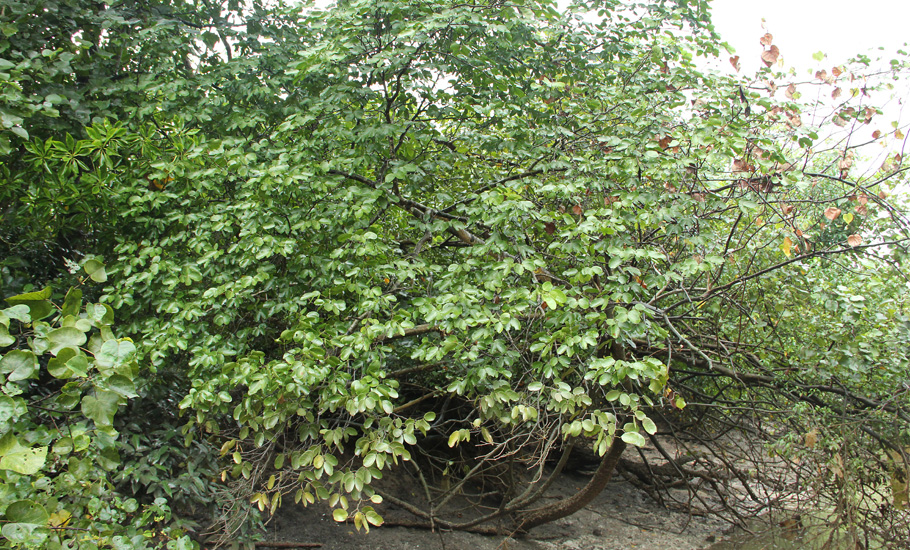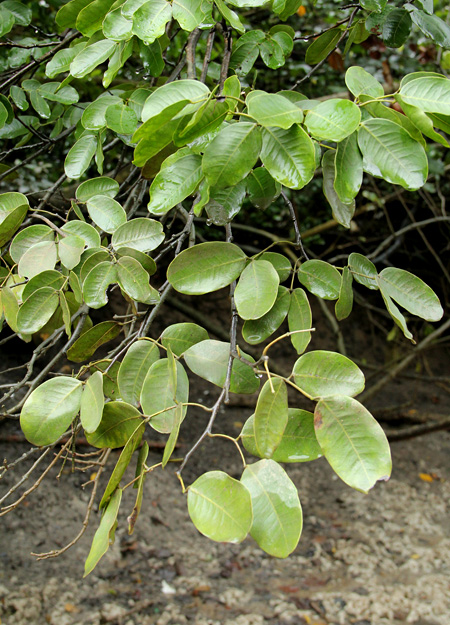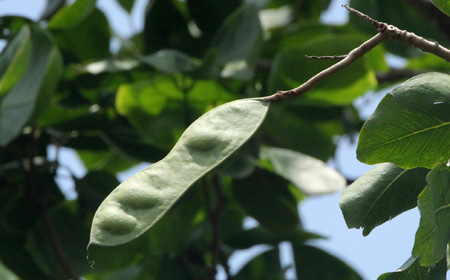Intsia bijuga (Colebr.) Kuntze
| Family | Fabaceae | |
|---|---|---|
| Synonyms | Afzelia bijuga A.Gray, Afzelia cambodiensis Hance, Intsia cambodiensis (Hance) Pierre | |
| Common Names | Moluccan Ironwood, Borneo Teak, Ipil, Merbau, Sira | |
| Status | Native: Critically Endangered | |
| Form | Tree | |
| Native Distribution | Island in Indian Ocean, tropical Asia to Australia, Melanesia and Micronesia | |
Diagnostics:
A mangrove tree that can grow up to 40m, Intsia bijuga it can be easily distinguished among others in its habitat from the even-pinnate leaves comprising of 1-3 pairs of leaflets (usually 2). Each leaflet is broadly oval.
Interesting Facts:
The timber (Merbau) is said to be very good quality (Giesen et al., 2006), as it is very hard, with little shrinkage and wrapping, as well as being durable, resistant to insects and weather. It is used for making houses and bridges. The bark and leaves are also used as medicine for diarrhoea.This tree can be recorded naturally in Admiralty Park, Khatib Bongsu, Kranji Nature Trail, Lim Chu Kang, Mandai Mangrove, Pulau Pawai, Pulau Tekong, Pulau Ubin, Seletar Mangrove and Sungei Buloh (NParks, 2013; Yeo, 2011).

A straggly form in Khatib Bongsu Mangroves.

A tall individual in Admiralty Park

Oval and opposite arranged leaflets.

Inflorescence. The petals turned from white to purple with age.

Fruit pod.
References
FloraFaunaWeb. (2013) Intsia bijuga (Colebr.) Kuntze. National Parks Board, Singapore. https://florafaunaweb.nparks.gov.sg. Accessed on 23-Jun-2017.Giesen W, S Wulffraat, M Zieren & L Scholten. (2006) Mangrove Guidebook for Southeast Asia. RAP Publication 2006/07. FAO Regional Office for Asia and the Pacific & Wetlands International, Thailand, Bangkok. 769 pp. Yeo R. (2011) Ipil (Intsia bijuga). http://tidechaser.blogspot.sg. Accessed on 23-Jun-2017.
Author: Siyang
Posted: 2017-06-23 / Modified: 2017-12-25
Google Ads